North Wales seagrass restoration in Holyhead Bay

May 30, 2024 Content Team Thanks to the support of local volunteers and landowners Stena Line, 50,000 seagrass seeds were planted last month at sites near Holyhead, covering an area of 150 m2. The planting followed on from a successful stakeholder engagement session held at Holyhead Sailing Club in March 2024, which was attended by members of the local community, alongside several local businesses and organisations. Pen Llŷn a’r Sarnau Special Area of Conservation Officer Alison Palmer Hargrave said “It has been fantastic to start the planting trials on Anglesey. I’d like to say a big thank you to all those that took part and helped make it successful. We also met some great people at a recent drop-in session in Holyhead, and I’m looking forward to working with them in the coming months.” The two planting sites in the Holyhead Bay (Penrhos Headland and Penrhyn) were selected based on local ecological knowledge provided by the community and because small patches of seagrass were found in these areas. The team will be back in the autumn to monitor the planted seagrass to inform future planting plans. The spring planting in the Holyhead Bay forms part of a wider programme of work called Seagrass Ocean Rescue North Wales, which aims to plant seagrass over an area of ten hectares across North Wales between 2022 and 2026. The programme is being managed by WWF, in partnership with Project Seagrass, the North Wales Wildlife Trust and Pen Llŷn a’r Sarnau Special Area of Conservation (SAC) and Swansea University. The programme is made possible with support from funders that include the National Lottery Heritage Fund, Garfield Weston Foundation, and the Moondance Foundation. There will be more opportunities to get involved in the project including future planting events, seed collection, seagrass festivals, and drop-in sessions. For more information about the upcoming programme please contact Alison at: alisonpalmerhargrave@gwynedd.llyw.cymru or to volunteer, please email: volunteers@projectseagrass.org
Want to host the 16th International Seagrass Biology Workshop?
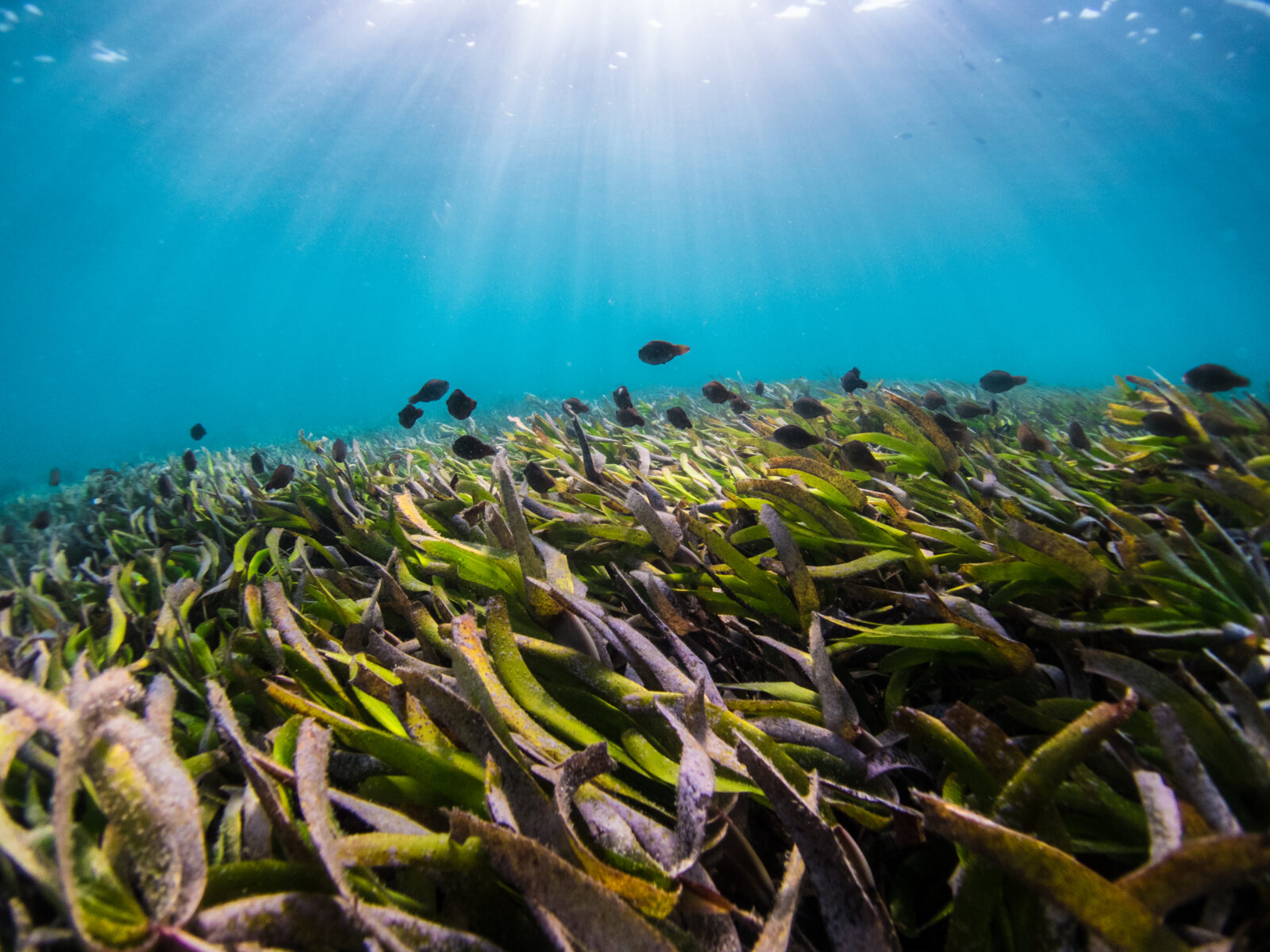
The World Seagrass Association Inc. invites expressions of interest from members and interested organisations/institutions who would like to host the 16th International Seagrass Biology Workshop (ISBW) in 2026. The International Seagrass Biology Workshop series is a meeting of research scientists, students and coastal environment managers focusing on global seagrass issues, improving seagrass knowledge, developing networks and advocating for seagrass protection/conservation. ISBWs are often 4-6 day events, made up of 2-3 days of talks (in a conference setting) and 1-2 days of workshops and often include an additional day for a field trip. Participants are generally around 100 individuals, however, this is highly dependent on the venue. The timing for ISBWs has mostly been late September, although the timing is dependent on what is most suitable for the hosting country (e.g. tides, holidays, etc). We would also like to encourage organisations/institutions in localities that have been underrepresented in past ISBWs to consider hosting this event to highlight the need for seagrass research and to expand our research networks. After the first official ISBW in 1993 it was decided that meetings were to be held at two year intervals, swapping between developed and developing nation locations. The 2024 meeting (ISBW15) will be held in Naples, Italy, from 17-21 June, in conjunction with the World Seagrass Conference (WSC2024) (https://www.isbw15.it/). Past ISBW venues include:ISBW1 (1993) Japan – KominatoISBW2 (1996) Australia – Rottnest IslandISBW3 (1998) The Philippines – Quezon City and BolinaoISBW4 (2000) France – Corsica!SBW5 (2002) Mexico – EnsenadaISBW6 (+Conference) (2004) Australia -Townsville and Magnetic islandISBW7 (2006) Africa – ZanzibarISBW8 (2008) Canada – Bamfield, Vancouver islandISBW9 (+Conference) (2010) Thailand – Phuket and Trang ProvinceISBW10 (2012) Brazil – BuziosISBW11 (2014) China – Sanya, Hainan ProvinceISBW12 (2016) United Kingdom – Nant Gwrtheyrn, WalesISBW13 (+Conference) (2018) SingaporeISBW14 (+Conference) (2022) USA – Annapolis, Maryland To read about the history of the ISBW series, seeColes, R., Short, F., Fortes, M. and Kuo, J (2014) Twenty years of seagrass networking and advancing seagrass science: The International Seagrass Biology Workshop Series. Pacific Conservation Biology 20(1): 8–16. (http://www.publish.csiro.au/nid/302/paper/PC140008.htm), andHind-Ozan, E.J., Jones, B.L., 2017. Seagrass science is growing: A report on the 12th International Seagrass Biology Workshop. Marine Pollution Bulletin.http://dx.doi.org/10.1016/j.marpolbul.2017.08.017 The International Seagrass Biology Workshop (ISBW) is an official activity of the World Seagrass Association Inc., and WSA Inc. plays a guiding role, and assists the Convener/Organising Committee when requested. Members or organisations/institutions who are interested in hosting the 16th International Seagrass Biology Workshop (ISBW) in 2026 should submit an Expression of Interest by email to Len McKenzie, Secretary, World Seagrass Association Inc., at wsa.secretary@gmail.com no later than March 01, 2024.Expressions of Interest should be no longer than 3 pages and include the following:• Name of Applicant• Applicant’s contact information including physical address and email address• Proposed Hosting Institution (add a brief description)• Country and proposed location for the event• Institutional Support• Tentative Venue Details (conference, workshop and field trips)• Preliminary Proposed Theme• Travel & Visa Considerations• Health & Safety Considerations• Diversity, Equity & Inclusivity ConsiderationsThe WSA may require more detailed information in future before a final decision. If you require additional information or any enquiries, please email wsa.secretary@gmail.com Previous Post January 15, 2024 ISBW press release updates World Seagrass Association
Seagrass app inspires a rise in citizen science across the globe
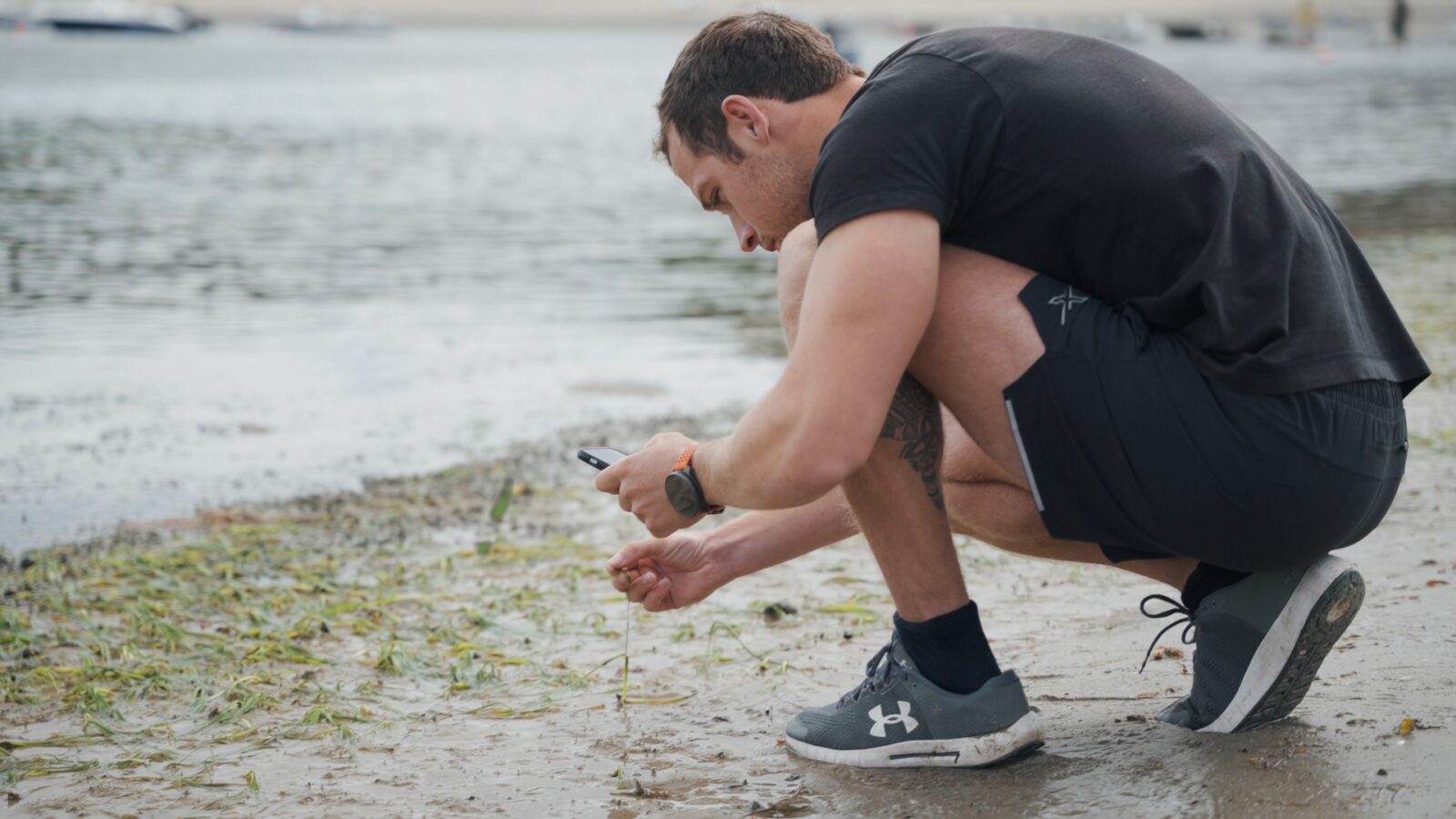
Internationally renowned charity Project Seagrass is marking it’s tenth anniversary by re-launching its citizen science website and mobile app SeagrassSpotter which enables anyone and everyone to engage with the seagrass meadows on their doorstep or anywhere else in the world, whether it’s there now or it once was. SeagrassSpotter was established in 2016 and allows people to upload point data showing the presence of seagrass with photo evidence. Since its initial launch, it has gathered over 7,000 sightings of seagrass from over 3,500 users across 105 countries and has recorded 45 species of seagrass. It’s relaunch will include new features, such as being able to record absence data to track where seagrass may have once existed but is now lost. Dr Leanne Cullen-Unsworth, CEO at Project Seagrass, said: “Over the last ten years, we have successfully raised awareness of the importance of seagrass and the role it plays in tackling the biodiversity and climate crises. Now we must accelerate efforts to protect and restore this vital habitat. Everyone can have a part to play in securing a future for seagrass and SeagrassSpotter is a great tool to engage and connect people in seagrass science and mapping all over the world.” The UK alone has lost up to 92% of its seagrass meadows, an essential ecosystem that protects our coasts, supports the fishing industry, and puts food on our tables. To monitor, identify and stop the loss of seagrass all over the world, Project Seagrass is calling for more people to engage in citizen science and not only record where seagrass meadows can be seen, but where they once were and now no longer are. Saving the world’s seagrass meadows is an essential task if we are to address both the climate and biodiversity crises, but making waves to do this requires the many, rather than the few. Seagrass has long been the unknown and forgotten oceanic plant, a plant that was once terrestrial, and is now becoming a household name as we learn more about its significance to both people and planet. For instance, seagrass supports 20% of the world’s largest commercial fisheries, therefore without it, our fish stocks will continue to drastically reduce. There are also communities all over the world who are dependent on seagrass, as their main food source, fish, derives from their local seagrass meadows. When considering nature-based solutions, seagrass meadows are high on the agenda and a hot topic for carbon sequestration and biodiversity support, however, the science required to evidence the quantities is not yet complete. We therefore have much to do in the next decade to ensure we protect the seagrass we have and put back what we have lost. To achieve this, we must all play our part, which is why citizen science is on the rise. With more people actively engaging in local projects, now is the perfect opportunity for Project Seagrass to re-launch their citizen science web platform and phone app, SeagrassSpotter. To explore the SeagrassSpotter tool visit https://seagrassspotter.org/
Ben Jones appointed as President of the World Seagrass Association
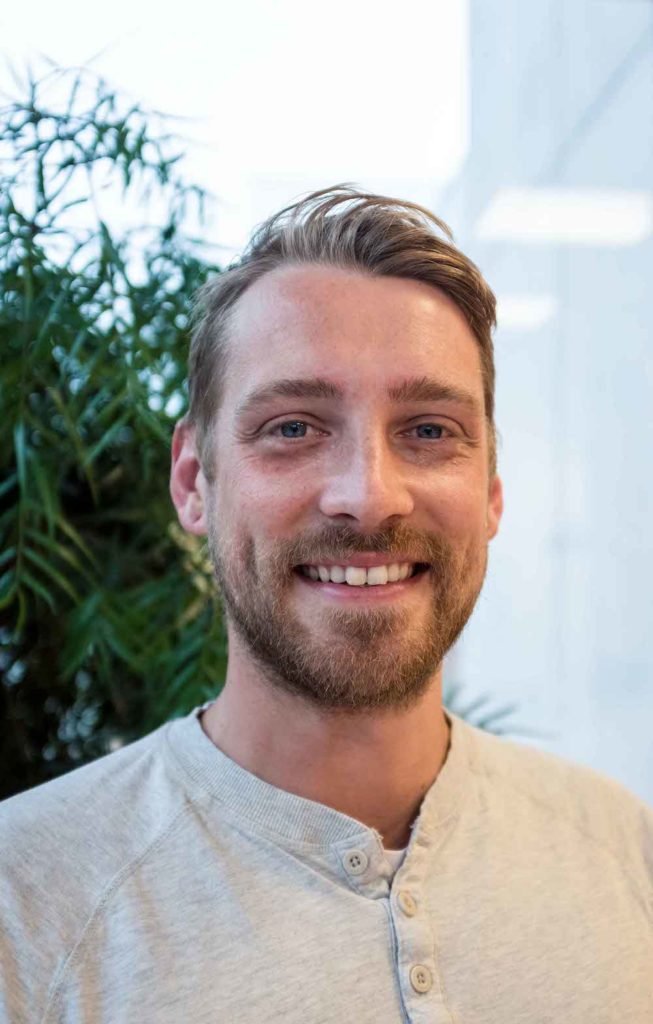
Dr Benjamin Jones, Chief Conservation Officer at Project Seagrass has started his two-year term as President of the World Seagrass Association (WSA). He steps up to the role having been elected at the WSA Annual General Meeting (AGM) in December 2022. Prior to this he’s served on the WSA Steering Committee for a number of years. “I’m so thrilled to take on this challenge alongside the management committee consisting of Vice President Emma Jackson, Treasurer Yi Mei Tan and Secretary Len McKenzie, as well as the Steering Committee who will share collective responsibilities in determining and delivering the strategic direction of the association and providing oversight,” says Ben. Four years of achievement Outgoing president, Dr Jessie Jarvis of the University of North Carolina Wilmington, brought her term to a close with the Associations AGM in December. “I have had the privilege of serving as the WSA president during a time of unprecedented change and uncertainty,” said Jessie. “The challenges we faced as a global community during the pandemic were only eclipsed by the overwhelmingly creative ways that our membership worked together to continue the WSA mission. Some highlights of our achievements over the last four years include supporting Sri Lanka and their global partners to have World Seagrass Day officially recognized by the UN, introducing a seminar series while also providing a new way for members to connect, and working with the ISBW Organizing Committee to ensure that not only ISBW 14 but future ISBW meetings, continue to bring us together.” During Jessie’s presidency the Association has: Endorsed and contributed to the report, Out of the Blue: The Value of Seagrasses to the Environment and to People, released by the United Nations Environment Programme (UNEP) together with GRID-Arendal and UNEP’s World Conservation Monitoring Centre (UNEP-WCMC). Launched the WSA Seagrass Seminar Series in response to the COVID-19 Pandemic, assembling eight researchers from across the globe to deliver 5 different talks and panel discussions from seagrass communication to ocean acidification. Welcomed and supported the decision of the UN General Assembly to adopt a resolution from the government of Sri Lanka to recognise March 1st as World Seagrass Day. Supported the 14th International Seagrass Biology Workshop & 2022 World Seagrass Conference in Annapolis, MD, USA, the theme of which was “Signs of Success: Reversing the Course of Degradation.” Provided financial support to 10 students in order to attend ISBW14. Achieved a 12% growth in membership numbers. A presidential vision Ben is looking to start his presidency on the front foot. “As part of the steering committee for many years, I’ve seen what a well-run ship the WSA is and how much it can achieve. Just look at the last four years,” he says. “I’ve also realised how quickly the years pass, so if I’m to have a contribution, it’s vital that I have a vision early on.” Ben is determined that the seagrass community steps up and plays a full role in efforts to combat the biodiversity and climate crisis. “The current decade will be transformative, it needs to be,” he says. “There is now broad awareness across society of the desperate need to halt the decline in nature, and seagrass in particular. We have political will and businesses wishing to participate. For probably the first time, seagrass is now up there with coral reefs and forests in public perception. We currently sit within the UN Decade on Ecosystem Restoration and the UN Decade of Ocean Science for Sustainable Development, and as a membership we need to build on the momentum achieved in the past four years and do our part to support these global movements.” However, while there is now more will to protect nature and more resources available, experience of achieving seagrass conservation and restoration at scale is limited. Ben believes that this is where the members of the WSA must play their part. “We need ambitious plans, and they must be socially- and ecology-informed and evidence-rich. They need to be science backed” he says. Amplifying voices and providing a platform for new growth Ben wants to work to amplify underrepresented voices within the seagrass science, conservation, restoration, and management community, as well as continue with efforts to develop the WSA as the expert voice for seagrass. “We need work to make WSA more inclusive and relevant for its membership, particularly students, to foster a stronger community and continue to raise the profile of seagrass science to meet ever increasing societal and environmental challenges,” he says. “I’d also like to explore opportunities for supporting global seagrass science, conservation and restoration through a small grants scheme for students and young professionals,” he says. “We must endeavour to give individuals from under-represented groups opportunities. In that sense, I see the WSA like a gym, the more effort we put in as a community, the more rewards we’ll see and a community.”
Why saving the world’s seagrass is part of the most important to-do list in the history of humankind
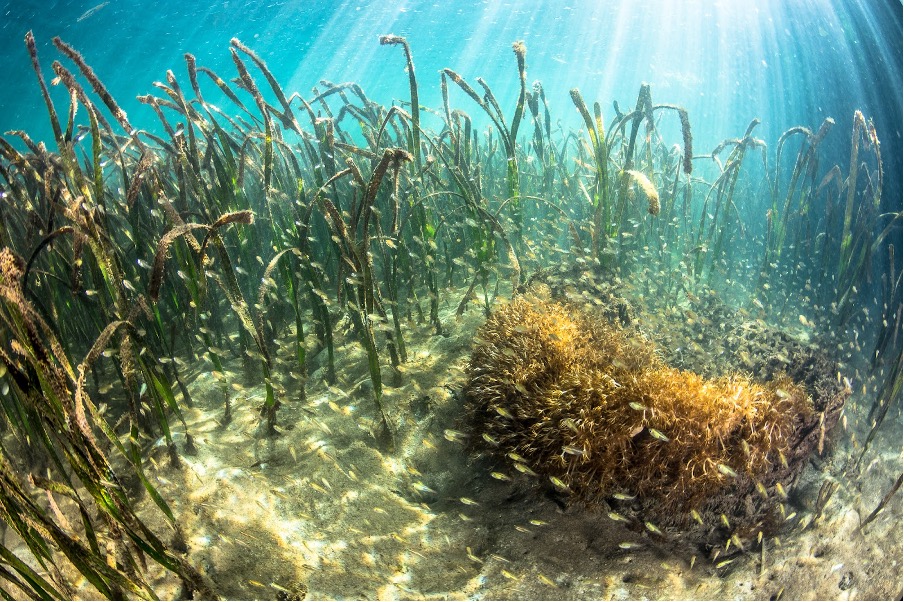
“The downward trajectory of the world’s seagrass meadows must be reversed if we are to fight the planetary crisis” say leading seagrass scientists. The United Nations Sustainable Development Goals have recently been described as “the most important to-do list in the history of humankind”. Scientists from Project Seagrass and Swansea University have this week published a unique review that demonstrates how this “To-Do List” of Sustainable Development Goals provides a blueprint for achieving the net recovery of seagrass ecosystems. Conserving and restoring seagrass meadows contributes to achieving 16 out of the 17 Sustainable Development Goals. Recognising this wide role of seagrass meadows in helping achieve humanity’s ‘to-do list’ and thinking beyond their value in carbon sequestration and storage is critical to achieving the recovery of these degraded ecosystems. The call for urgent action comes after a review into the status of seagrass ecosystems and the major ecological role that they play in the coastal environment published in the leading academic journal Science and written by experts at the marine conservation charity Project Seagrass and Swansea University. Seagrass meadows are being increasingly looked to as a climate solution. However, seagrass ecosystems are sensitive to stressors and remain threatened across the globe. These degraded seagrass ecosystems are less effective at supporting biodiversity and tackling climate change. The authors state “Society needs to create meaningful pathways to net gain at local to global scales. Bold steps are needed through improved legal instruments to halt damaging factors such as bottom trawling, prevent use of damaging boating activities and to apportion responsibility for poor water quality that is causing the slow death of seagrass globally”. By recognising that seagrass meadows contribute to finding solutions to global problems such as food insecurity, water quality, wellbeing and gender equality, as well as the more well known issue such as biodiversity loss and climate change there becomes a more holistic view as to the benefits of taking large cumulative levels of action at local, regional and global scales. We need local and regional authorities to create a baseline of where seagrasses are now, where they used to be and where in the future they could be allowed to recover and be restored to get seagrass on the path to recovery. This needs to occur within the next decade if we are to fight climate change, to fight the biodiversity crisis, protect our coastlines and maintain global food security. Richard Unsworth (lead author) said “The world needs to rethink the management of our coastal environment that includes realistic compensation and mitigation schemes that not only prevent damage, but also drive the restoration, enhancement and creation of seagrass habitat. We also need a major shift in how we perceive the status of our marine environment by examining historical information, not just recent ecological baselines”. Ben Jones, a fellow author of the study added, “It is vital to work collaboratively as it is only through utilising scientific environmental studies and working as cogs in a global partnership for seagrass that meaningful change can happen”. Seagrass conservation faces substantial ecological, social and regulatory barriers and requires strong cross-sectoral partnerships to be put on the path to recovery. Identifying the solutions to seagrass conservation and restoration has never been more urgent and is critical to fight the planetary emergency. This can be achieved by using the Sustainable Development Goals as a blueprint towards recovery. Read the paper here.
Seagrass meadows are reliable fishing grounds for food
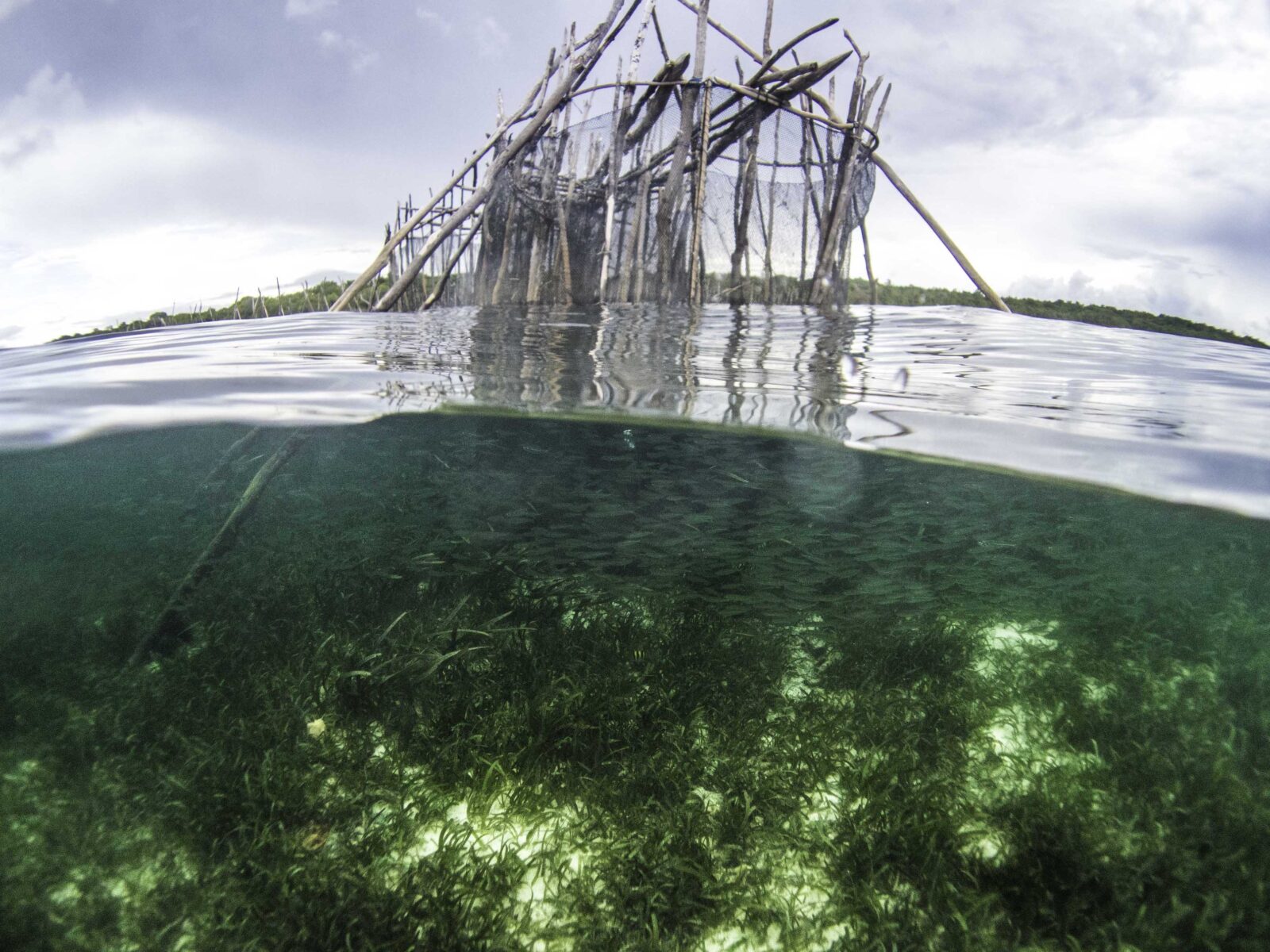
A new study shows that seagrass fisheries provide a reliable safety-net for poor fishermen, since they perceive those habitats to maintain large fish catches over time. Surprisingly, even more so than coral reef fisheries, which people normally associate with small-scale fishery. Seagrass meadows are routinely used as a fishing habitat across the Indo-Pacific region to sustain millions of households by providing fish and other animals for food and income from fishing. A new study in Ocean and Coastal Management investigated how and why households use seagrass meadows across Cambodia, Tanzania, Sri Lanka and Indonesia in the Indo-Pacific region by conducting interviews that asked what habitats they used and which they preferred. Benjamin Jones, director of Project Seagrass and PhD student at the Department of Ecology Environment and Plant Sciences, Stockholm University, says: “Seagrass was the most common habitat used for fishing. Nearly half of all households we talked to preferred fishing in seagrass over other habitats such as coral, mangroves, open ocean, mud and rock for example. This was surprising because most people think of reef fisheries as the key tropical small-scale fishery, but we show that its actually engagement in seagrass fisheries that are much more characteristic of households.” When the researchers asked the fishermen why they preferred seagrass, they expressed a general feeling of reliability: seagrass meadows always provide large catches and fish and invertebrates are always found there. This is likely due to the ecological role that seagrass meadows play for fish. They provide valuable nursery habitats with lots of places for fish to hide and grow which means that there is often a high abundance of fish present. The study also revealed that 3 in 20 people across the region were reliant on seagrass meadows as their fishing ground and did not fish anywhere else. The research from households in 147 villages also revealed that reliance on seagrass meadows was strongly influenced by household income: “Household income had two different effects. On one hand, poorer households were less likely to own motorboats. These were reliant on seagrass as they were unable to fish elsewhere, seagrass is close to shore and easy to access without a motor. On the other hand, wealthier households were more likely to own certain types of fishing gear that incentivized them to use seagrass due to high rewards and low effort requirements. These were static fishing fences that don’t require a fisherman to be present” says Benjamin Jones. Study co-author and fellow Project Seagrass director Leanne Cullen-Unsworth, says “Our results highlight the need for empirical household scale data for management of seagrass meadows. People use and value seagrass for many different reasons so safeguarding seagrass is vital to ensure that all people, all of the time, have equitable and equal access to the resources seagrass provides.” The study was a collaboration between scientists from Stockholm University, Project Seagrass, Swansea University, Uppsala University, Hasanuddin University, among others. Open Access paper: Jones, B.L.H.; Unsworth, R.K.F.; Nordlund, L.M.; Eklöf, J.S.; Ambo-Rappe, R.; Carly, F.; Jiddawi, N.S.; La Nafie, Y.A.; Udagedara, S.; Cullen-Unsworth, L.C. Dependence on seagrass fisheries governed by household income and adaptive capacity. Ocean & Coastal Management 2022, 225, doi:10.1016/j.ocecoaman.2022.106247.
Want to host the 15th International Seagrass Biology Workshop?

The World Seagrass Association Inc. invites expressions of interest from members and interested organisations/institutions who would like to host the 15th International Seagrass Biology Workshop (ISBW) in 2024.The International Seagrass Biology Workshop series is a meeting of research scientists, students and coastal environment managers focusing on global seagrass issues, improving seagrass knowledge, developing networks and advocating for seagrass protection/conservation.ISBWs are often 2-3 day workshops with an additional day for a field trip. Participants are generally limited to 100 however this is highly dependent on the venue. The timing for ISBWs has mostly been late September, although the timing is dependent on the most suitable for the hosting country (e.g. tides, holidays, etc). After the first ISBW in 1993, it was decided that meetings were to be held at two year intervals, swapping between developed and developing nation locations if possible. ISBW14 was originally scheduled to be held in 2020, but has been postponed to 2022 in light of the global COVID-19 pandemic. The 2022 meeting (ISBW14) will be held in Annapolis (Maryland, USA) from 7 – 12 August 2022, in conjunction with the World Seagrass Conference (WSC2022) (https://isbw14.org/). Past ISBW venues included: ISBW1 (1993) Japan – KominatoISBW2 (1996) Australia – Rottnest IslandISBW3 (1998) The Phillippines – Quezon City and BolinaoISBW4 (2000) France – Corsica!SBW5 (2002) Mexico – EnsenadaISBW6 (+Conference) (2004) Australia –Townsville and Magnetic islandISBW7 (2006) Africa – ZanzibarISBW8 (2008) Canada – Bamfield, Vancouver islandISBW9 (+Conference) (2010) Thailand – Phuket and Trang ProvinceISBW10 (2012) Brazil – BuziosISBW11 (2014) China – Sanya, Hainan ProvinceISBW12 (2016) United Kingdom – Nant Gwrtheyrn, WalesISBW13 (+Conference) (2018) Singapore To read about the history of the ISBW series, see Coles, R., Short, F., Fortes, M. and Kuo, J (2014) Twenty years of seagrass networking and advancing seagrass science: The International Seagrass Biology Workshop Series. Pacific Conservation Biology 20(1): 8–16. (http://www.publish.csiro.au/nid/302/paper/PC140008.htm), and Hind-Ozan, E.J., Jones, B.L., 2017. Seagrass science is growing: A report on the 12th International Seagrass Biology Workshop. Marine Pollution Bulletin. http://dx.doi.org/10.1016/j.marpolbul.2017.08.017The International Seagrass Biology Workshop (ISBW) is an official activity of the World Seagrass Association Inc., and WSA Inc. plays a guiding role, and assists the Convener/Organising Committee when requested. Members or organisations/institutions who are interested in submitting an expression of interest to host the 15th International Seagrass Biology Workshop (ISBW15) in 2024 should send a letter by email to Len McKenzie, Secretary, World Seagrass Association Inc., at wsa.secretary@gmail.com no later than May 31, 2022. Please include the name and complete contact information including address, phone and fax numbers, and email address of the member or organisations/institutions expressing interest. Letter should clearly state the country location and supporting organisation. Dot points covering the information required are acceptable. The WSA may require more detailed information in future before a final decision. If you require additional information or any enquiries, please email wsa.secretary@gmail.com
Mosquito nets: Are they catching more fishes than insects?
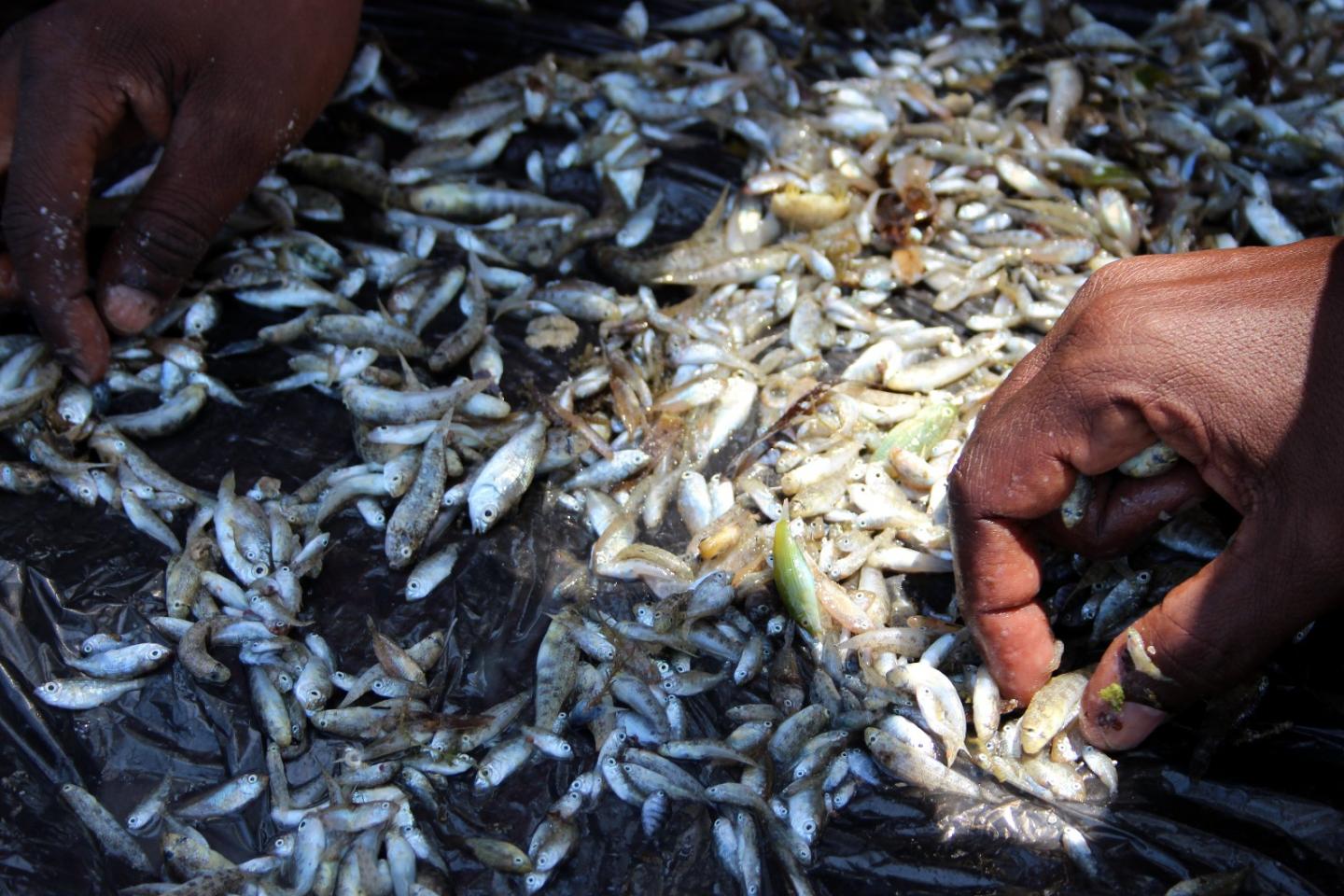
Mosquito nets designed to prevent malaria transmission are used for fishing which may devastate tropical coastal ecosystems, according to a new scientific study. The researchers found that most of the fish caught using mosquito nets were smaller than a finger and potentially collect hundreds of individuals. Malaria is a serious global health issue, killing nearly half a million people every year worldwide. Aid organisations like the Bill and Melinda Gates Foundation have invested in solutions to solve the crisis such as distributing hundreds of thousands of bed nets to protect people from mosquito bites carrying the virus. “Distributed mosquito nets are intended to be used for malaria protection, yet communities living in poverty use them for fishing, providing fresh concerns for already overfished coastal ecosystems, says,” Benjamin Jones, a director of Project Seagrass and PhD researcher at Stockholm University Department of Ecology, Environment and Plant Sciences. There are few studies that investigate how much fish mosquito-net fishing potentially harvests, although the use of mosquito nets for fishing is not a new phenomenon: “No evidence on the sheer amount of fish that these fisheries extract has been published that we are aware of. Gaining an understanding of these catches is vital if we are to manage such fisheries,” says Benjamin Jones. In Mozambique, each sweep of the mosquito net caught more than half of the average daily catch (2.4 kg a day) using traditional nets, by weight. But many of the fishes were very small, which means mosquito net fishers who cast their nets many times each day are removing a huge number juvenile fish to eat. Many of the species caught are important for food in the region when adults or help keep the seagrass ecosystems where they are found healthy. “The use of mosquito nets for fishing may contribute to less food availability, greater poverty and the loss of ecosystem functioning,” concludes Dr Richard Unsworth, a co-author and Lecturer in Marine Biology at Swansea University. Finding a solution to the problem is incredibly hard, but the researchers suggest the need for marine scientists, social scientists, health professionals and fishing communities to all work together. Laws imposed from governments make the use of mosquito nets for fishing illegal in some localities, however, such mechanisms are evidently insufficient because people still need food and “need re-thinking” according to the study. “We need to know why communities aren’t using these nets for intended use, and therefore we have to involve them, so they can be part of developing solutions to these challenges,” says Richard Unsworth. The team collected data at seagrass meadows by ten coastal villages in northern Mozambique. Identifying each fish species, the researchers recorded the weight of each fish group and the total catch, as well as age and where they are positioned in the food web. The open access paper – “The perverse fisheries consequences of mosquito net malaria prophylaxis in East Africa” – is published on Monday 11th November at https://doi.org/10.1007/s13280-019-01280-0
Waste Not, Want Not. Discards that could feed those in poverty
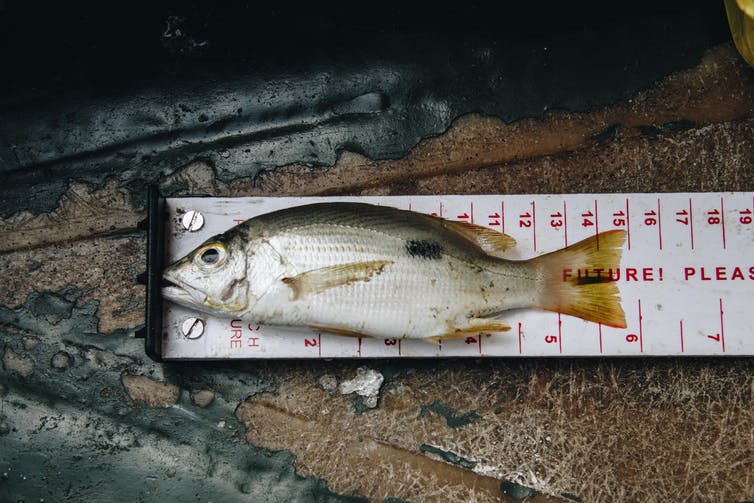
At least 7.3m tons of fish (usually dead or dying) are thought to be discarded each year from marine fisheries around the world. But these estimates come mostly from observations of large-scale industrial fisheries. Limited attention has been paid to small-scale fisheries, which are assumed to have low discard rates – some estimate as little as 3.7% total catch, compared to more than 60% for some large-scale shrimp trawlers. Small-scale or artisanal fisheries – for which there is no universal definition – are generally considered more sustainable than their large-scale industrial counterparts, but there is increasing evidence that shows this is not always the case. They employ more than 99% of the world’s 51m fishers and likely account for more than half of the total global fisheries catches. A Sri Lankan fisherman. One of the biggest problems for both large and small-scale fisheries around the globe is bycatch – fish and other marine organisms caught when the fishers are targeting something else. Powerful images of turtles and dolphins caught in fishing gear have caught the sympathy of the general public, but unintentional landings of fish aren’t as evocative. The truth is, however, that fish bycatch is a big issue. Progress is being made in Europe within large-scale fisheries thanks to campaigns such as the Fish Fight. But small-scale fisheries – though there is increasing recognition outside that they are “too big to ignore” – are only just beginning to recognise the fish bycatch and discard problem. Catch and bycatch. Our newly published research has found that artisanal fisheries in Sri Lanka are throwing away more marine species than they keep. For every fishing trip in one of Sri Lanka’s largest lagoons, Puttalam Lagoon, fishermen could be throwing away more than 50 fish. What’s more, of the 62 species recorded in the survey, more than 80% were routinely discarded. The reasons for this practice are unclear but sometimes it is because the individual fish are too small – or they are species without a high market value. We found that fishers targeting shrimp in particular caught more non-target species and had higher discards than those targeting fish. This is particularly worrying at a time when Sri Lankan shrimp exports are increasing, after the EU granted the country improved access to its market. Fishers in Puttalam Lagoon discard non-target catch onshore. Potentially 90% of the world’s fish stocks are threatened by over-fishing – when more fish are caught than the population can replace. And the “tell-tale” signs of over-fishing are now being observed in Sri Lanka and across other research sites in the Indo-Pacific region. Fishers in these locations have told us and other researchers that they are catching much less fish than they were five years ago. But this is not just an ecological issue, it is a social one too. In this era of increasing food insecurity, our findings highlight a serious concern for Sri Lanka. This unwanted seafood could be used to provide protein for the poorest in society. Instead, we found that fish with high nutritional value is being eaten by feral dogs and birds. Unwanted fish end up as quick and easy meals for animals. Billions of people worldwide rely daily on fish for protein, while 50m people also rely on catching fish for work. But, if the levels of bycatch and discard continue, the livelihoods and food security of the people that depend on these fisheries will be under threat. If the problem is not managed, there won’t be any fish left in the waters. There is one ray of hope for Sri Lanka, however. There are some small-scale fishery cooperatives which maximise long-term community benefits by dealing with the threats of fisheries mismanagement, livelihood insecurity and poverty. Communities with successful and inclusive cooperatives are better off than those without. Cooperatives have the potential to empower small-scale fishers against environmental and socioeconomic shocks, but the problem in Puttalam Lagoon is that these cooperatives are not operating across all levels of society. Fishing cooperatives do exist, but there could be more. If the bycatch and discards issue is going to be solved over the long-term, we need to look at combining sustainable management practices with community schemes to reduce unnecessary seafood waste all over the world. Together the millions of small-scale fishers all over the world have an immense amount of power, they just need to realise it. This article was originally published on The Conversation. Read the original article.
Sewage and livestock waste is killing Britain’s seagrass meadows
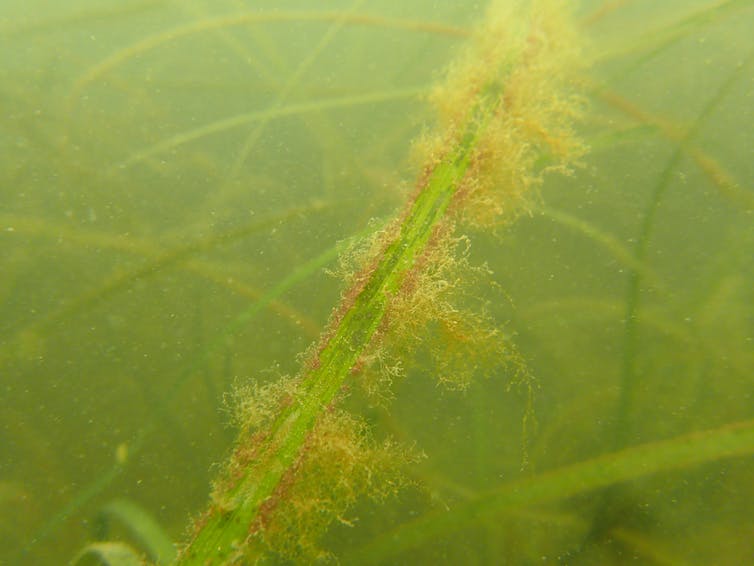
Britain’s seagrass is a refuge for numerous species of fish, stabilises sandy beaches, and helps to lock away the carbon which humans produce. The meadows that surround the country’s coast have been called the “canaries of the sea”, due to their sensitivity to a changing environment. And like a canary in a coal mine, their health can be used as an indicator of the condition of coastal areas. We know that the seagrass meadows surrounding the UK are in a perilous state of decline, and our recently published research has now uncovered one of the biggest causes. Our study suggests that a major driver of seagrass decline is nutrient pollution from sewage and livestock waste. Though a new finding, it sadly comes as no surprise, given that about 40% of rivers in England and Wales are polluted with sewage. This nutrient pollution puts the long term viability of seagrass meadows in doubt. Over-enrichment results in the suffocation of seagrass. The nutrients cause microscopic algae – called epiphytes – to smother the seagrass leaves, decreasing their ability to capture light, ultimately killing them, and destroying the habitat for fish and other marine animals. Â The seagrass, Zostera marina, covered in epiphytes. In addition to this environmental impact, we found that several areas, including the Thames waterway seagrass, and a meadow in Studland Bay, Dorset – which are popular with swimmers and boaters – were considerably enriched in nutrients from sewage, livestock effluent and/or human waste. Despite this, neither location, nor any other we identified with the same problem, were classed as unsuitable for swimmers. Outdated treatment Clearly, we have a massive problem at hand – but water companies, farmers and the government have not done and are still not doing enough to prevent it. Though efforts have been made to develop a British marine protected area network, and EU legislation has improved water quality in the last few decades, we have found these initiatives to be insufficient. Ten of the 11 sites we studied were in areas with designated EU protection, but most of these seagrass meadows were still polluted with nutrients derived from urban sewage and livestock waste. So how has this happened? Analysis of the seagrass tissues points to constant sewage exposure. Old and outdated water treatment facilities are one of the likely culprits, resulting in discharges of untreated sewage during times of heavy rainfall. These are legal, but evidently the capacity of these facilities is insufficient to handle the country’s needs, and waterways are suffering because of it. There is also the problem of livestock waste. Farming is now one of the UK’s leading causes of water pollution, and inefficiencies in storage and disposal of slurry mean that it ends up in rivers and coastal waters. Local and national Evidently, in addition to national and international initiatives, we need to start quickly identifying and understanding all local threats to seagrass. Especially if we are going to harmonise conservation goals with sustainable economic development. Only by finding out specifically where the nutrients affecting seagrass areas have come from can we really start to think about a targeted solution for each meadow. Unfortunately, to date, the conservation of specific seagrass meadows is rarely based on the explicit consideration of local threats and drivers. Instead, projects focus on conserving seagrass as part of a broader plan, incorporating other specific habitats or species. While this may be effective at dealing with problems such as fisheries impacts, and is certainly a step forward for the marine environment, it doesn’t deal with the persistent and chronic problem of pollution – which can go largely unnoticed. Poor water quality isn’t just a problem for seagrass in the British Isles, it’s a global concern. But if we want to solve it, we must look beyond “protecting” seagrasses with legislation, and challenge the way we think about marine protection overall. Serious infrastructure changes and better management of river catchments – for example, restoration of riverbanks – are vital if we are going to develop long term waste water management plans that span both land and sea. You can read the study, Tracking Nitrogen Source Using δ15N Reveals Human and Agricultural Drivers of Seagrass Degradation across the British Isles, here. This article was originally published on The Conversation. Read the original article.

